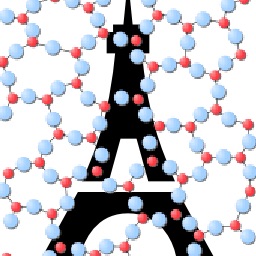Nanoengineering of concrete via topological constraint theory
Topological constraint theory is a convenient theoretical framework to predict structure–property relationships in glasses and identify optimal compositions featuring targeted macroscopic properties. Although introduced for chalcogenide glasses, molecular rigidity concepts have since been applied with great success to new families of materials, such as silicate glasses, phase-change materials, and proteins. Here, we review recent developments in the extension of rigidity theory to concrete, which is by far the most heavily manufactured material in the world. By capturing the important atomic topology while filtering out less relevant structural details of calcium–silicate–hydrate, the binding phase of concrete, topological constraint theory was used to nanoengineer concrete from the atomic scale by predicting the compositional dependence of hardness, toughness, and creep. As such, rigidity concepts represent a promising tool to accelerate the discovery of new materials with tailored properties.
